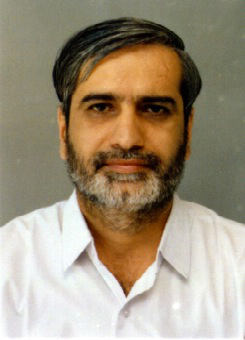 The textile industry’s hard realization that it was causing an unbearable health hazard to people’s lives came in February 2011 when the Madras High Court ordered that the 700-odd dyeing units in Tirupur be shut down. The order was the outcome of the legal battle fought by Noyyal River Ayacutdars Protection Association, a farmers’ association led by a social activist A P Kandaswamy, against the polluting industry. The Madras High Court order was the outcome of the contempt petition moved by the farmers’ association. Earlier, in 2006, the court had ordered the industry and the state government to ensure zero liquid discharge (ZLD, meaning no liquid effluent is released in the open). The factory owners’ plea that they should be given more time to implement the order was dismissed by the court on March 25, 2011.
The textile industry’s hard realization that it was causing an unbearable health hazard to people’s lives came in February 2011 when the Madras High Court ordered that the 700-odd dyeing units in Tirupur be shut down. The order was the outcome of the legal battle fought by Noyyal River Ayacutdars Protection Association, a farmers’ association led by a social activist A P Kandaswamy, against the polluting industry. The Madras High Court order was the outcome of the contempt petition moved by the farmers’ association. Earlier, in 2006, the court had ordered the industry and the state government to ensure zero liquid discharge (ZLD, meaning no liquid effluent is released in the open). The factory owners’ plea that they should be given more time to implement the order was dismissed by the court on March 25, 2011.
Pollution norms specify a TDS limit of 250 mg/l. To achieve ZLD, secondary treated waste is passed through membrane filters. The filter-reject, or reverse osmosis (RO) reject, is evaporated so that no pollutants are discharged in the open. Tirupur dyeing unit owners were agitated by the fact that they were asked to follow ZLD norms but it was not mandatory for the dyeing units in Ludhiana and other parts of the country to do so. They complained that because of this Tirupur units had to ensure evaporation of RO reject. According to them his extra step to fully treat the effluents before discharging them into the water bodies was very costly.
With the Union Government’s decision to enforce the ZLD norms across the country, this anomaly has been corrected. The government has mandated to achieve ZLD from the commissioning along with installation of 24/7 monitoring systems for all the new industrial units in textile, tannery, chemicals and other sectors. The existing units in these sectors are required to switch over to ZLD in a time-bound manner. For monitoring, they are required to install web cameras instead of continuous effluent monitoring devices. The discharge from small industrial units is treated through CETPs. All the CETPs will be made ZLD compliant in a phased manner and will also be equipped with devices installed at both inlets and outlets for 24/7 monitoring.
The Environment Ministry’s decision that nearly all textile processing units should eliminate liquid discharges by conforming to ZLD is a bold step and in sync with the international trend and trade practices. All textile processing units where waste water discharge is over 25 kilo litres/day will have to have Zero Liquid Discharge (ZLD) facility.
The industry associations complain that the proposed standards will be too stringent for the domestic textile processing industry. Setting up ZLD-effluent treatment plants needs huge initial capital investment as well as high recurring expenditure. They feel that it may not be possible for the textile sector – which is largely unorganized and comprising of SMEs – to adhere to these stringent pollution laws. As a result there might be widespread closure of units and/or halt in their developmental plans.
The industry, on its part, must realize that if they want to be future proof, and want to be part of the global business community, they will have to start taking environmental issues seriously. The government’s step may appear to be quite harsh but eventually it will prove to be in their own advantage. They should take this as a challenging opportunity to be seen as supporting and adopting global best practices – key element of all future business partnerships and global trade. India may not appear to be ready for such a major decision country-wide and industry-wide but those running industries are capable of implementing this if they look at it as their long-term investment. Good luck to you. May ZLD prove to be a pleasant and rewarding journey for you.
G.D. JASUJA
Managing Editor





